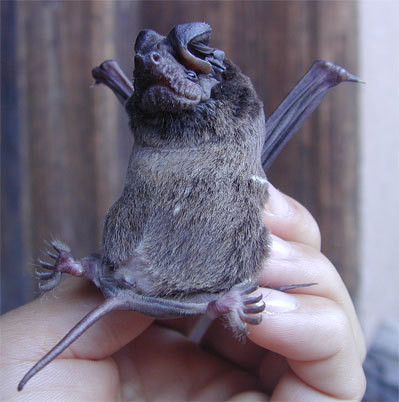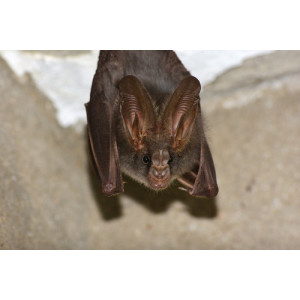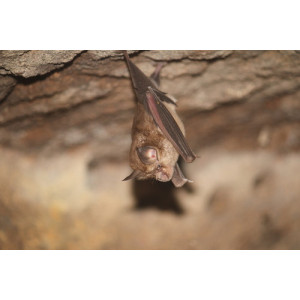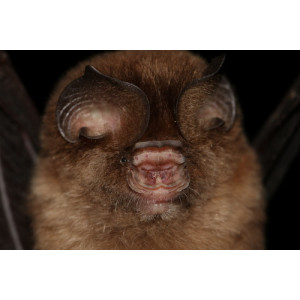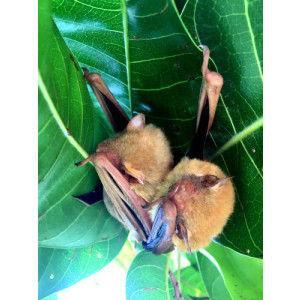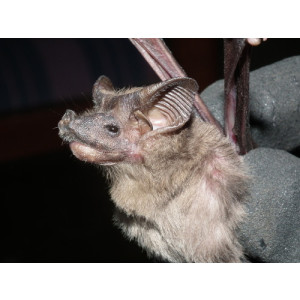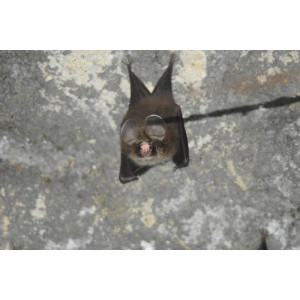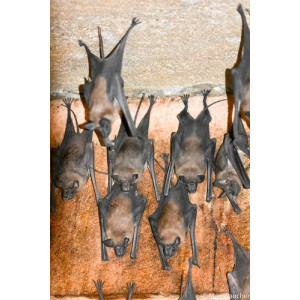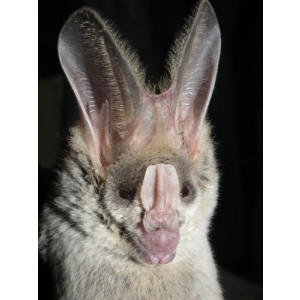Wrinkle-lipped Free-tailed Bat Did you see this animal?
Scientific Name : Chaerephon plicatus
Family : Molossidae
Order : Chiroptera
Class : Mammalia
Phylum : Chordata
Other Name : Wrinkled-lipped Bat
Habitat : Forest, Caves and Subterranean Habitats (non-aquatic), Artificial/Terrestrial, Artificial/Aquatic & Marine
Description : Wrinkle lipped bat is known to inhabit a variety of habitats, from forests to suburban areas.
The adult moth has a wingspan of about 2-3 cm and is typically gray or brown in color. It has a distinctive toothpick-like appearance due to the way it holds its wings folded tightly against its body. This posture allows the moth to blend in with its surroundings, making it difficult to spot.
The larvae of Chaerephon plicatus feed on the leaves of a variety of plants, including oak, hickory, and maple trees. They are typically green in color and have a smooth body with small spines along their sides.
Its coloration can vary from grayish-brown to reddish-brown, and it typically has a pattern of lighter and darker markings on its wings. The hindwings are usually a lighter color than the forewings.
It is a nocturnal species, meaning it is most active at night. It is attracted to lights and can often be found near porch lights, streetlights, or other sources of artificial light.
It has a well-developed sense of smell that it uses to find food and mates. It has scent receptors on its antennae that can detect pheromones from other moths from several miles away.
The larvae of Chaerephon plicatus are generally green in color and have a smooth body with small spines along their sides. They typically feed on the leaves of deciduous trees and shrubs
Overall, it is a fascinating species with unique physical characteristics and an important ecological role.
The adult moth has a wingspan of about 2-3 cm and is typically gray or brown in color. It has a distinctive toothpick-like appearance due to the way it holds its wings folded tightly against its body. This posture allows the moth to blend in with its surroundings, making it difficult to spot.
The larvae of Chaerephon plicatus feed on the leaves of a variety of plants, including oak, hickory, and maple trees. They are typically green in color and have a smooth body with small spines along their sides.
Its coloration can vary from grayish-brown to reddish-brown, and it typically has a pattern of lighter and darker markings on its wings. The hindwings are usually a lighter color than the forewings.
It is a nocturnal species, meaning it is most active at night. It is attracted to lights and can often be found near porch lights, streetlights, or other sources of artificial light.
It has a well-developed sense of smell that it uses to find food and mates. It has scent receptors on its antennae that can detect pheromones from other moths from several miles away.
The larvae of Chaerephon plicatus are generally green in color and have a smooth body with small spines along their sides. They typically feed on the leaves of deciduous trees and shrubs
Overall, it is a fascinating species with unique physical characteristics and an important ecological role.
Distribution in Bangladesh
References:
description written by:Asad U. Tanvir,Department of Zoology,Jagannath University,Dhaka; reviewed by:Muntasir Akash,Department of Zoology,University of Dhaka;Taxonomic Checklist:Red List of Bangladesh Volume 2: Mammals, 2015, IUCN; information sources:wikipedia,iucnredlist.org; photo credit:The Darwin Initiative Centre for Bat Research(www.inaturalist.org/people/manuel_ruedi), photo copyright: iNaturalist.more information please contact with us.
description written by:Asad U. Tanvir,Department of Zoology,Jagannath University,Dhaka; reviewed by:Muntasir Akash,Department of Zoology,University of Dhaka;Taxonomic Checklist:Red List of Bangladesh Volume 2: Mammals, 2015, IUCN; information sources:wikipedia,iucnredlist.org; photo credit:The Darwin Initiative Centre for Bat Research(www.inaturalist.org/people/manuel_ruedi), photo copyright: iNaturalist.more information please contact with us.
